
ESPAÑOL
Promotor: Pericles
Arquitectos: Ictino y Calícrates
Decoración escultórica: Fidias
Material: Mármol pentélico
De las ruinas de la antigua Grecia todavía se conservan construcciones emblemáticas en buen estado que han tenido que ir conviviendo con las sucesivas civilizaciones hasta nuestros días generación tras generación. El famoso Partenón de Atenas, que se construyó entre los años 447 al 432 a.C., se erigió en honor a Atenea, Diosa protectora de la ciudad de Atenas. El famoso templo se encuentra localizado en la Acrópolis de Atenas, y fue iniciado por Pericles (a.C. 495-429 a.C.), político orador ateniense durante la época de las Guerras Médicas y el Peloponeso. Asentado en lo alto de una enorme roca caliza horizontal, el famoso Partenón de Atenas fue diseñado por los arquitectos Ictino y Calícrates; no obstante, estos dos arquitectos de la época trabajarían conjuntamente con el importante escultor de la época Fidias (hacia 480 a.C.- h. 430 a.C), que se encargaría de la decoración escultórica de la monumental obra. El edificio se erigió espléndido en mármol blanco en lo alto de la acrópolis de Atenas, para dominar esta famosa ciudad histórica que hoy en día es visitada por millones de turistas cada año. De planta enteramente rectangular, sus medidas aproximadas son de unos 70 x 31 metros de largo y ancho respectivamente; la altura total es de unos 11 metros. La cubierta del templo está sustentada por una estructura a base de columnas de orden dórico que soporta todo el peso gracias a unos dinteles también de mármol. Los tímpanos estaban decorados con figuras en relieve relacionadas con diferentes escenas de la mitología griega; la mayor parte de estas esculturas, obra del escultor Fidias, descansan hoy en el prestigioso Museo Británico. El Partenón es todo un símbolo de la ciudad de Atenas, de Grecia entera y del mundo; no en vano, esta importantísima obra está considerada por la UNESCO como Patrimonio de la Humanidad.

El Monte pentélico se sitúa a 1109 metros de altura sobre el nivel del mar y es donde se asienta la Acrópolis de Atenas. Este monte está compuesto por enormes canteras de mármol pentélico. Este mármol, de blancura uniforme, brilla con tonalidades doradas bajo la luz del sol y fue utilizado para construir todas las construcciones que conforman la Acrópolis de Atenas y muchas otras esculturas de la antigüedad. En la actualidad, esta importante cantera de mármol pentélico está protegida por las autoridades locales y sólo puede ser utilizada para restaurar los propios edificios erigidos en torno a ella. En el lado norte de la Acrópolis de Atenas y en el mismo borde del precipicio se sitúa el Erecteión, uno de los más bellos templos griegos de orden jónico y de planta irregular con tres pórticos, que diseñó el arquitecto Filocles y que se construyó entre los años (hacia 421 a.C.- h. 406 a.C); cabría señalar que el templo se construyó sobre un terreno con diferentes desniveles. En el lado sur de este bellísimo templo se encuentra el pórtico que decoran las famosas Cariátides de Atenas. Su nombre quiere decir “habitantes de la ciudad de Caria”, en Laconia, que fue una antigua región del Peloponeso. Esta ciudad fue aliada de los persas en las Guerras Médicas, y sus habitantes fueron extraditados por otros griegos condenando a las mujeres de estos a soportar las más pesadas cargas convirtiéndolas en esclavas. De este modo surgiría la idea de sustituir la columna clásica por la figura femenina esculpida en mármol para soportar todo el peso del templo a modo de castigo. A pesar del lamentable sacrificio que ofrece la imagen de las famosas Cariátides de Atenas, estas se han convertido en una de las imágenes más representativas e importantes de la ciudad y también de Grecia.
.jpg)
ENGLISH
Promoter: Pericles
Architects: Ictinus and Callicrates
Sculptural decoration: Phidias
Material: Marble Pentelic
From the ruins of ancient Greece are still preserved in good condition emblematic buildings that have had to live with the successive civilizations to present day generations. The famous Parthenon in Athens, which was built between the years 447 to 432 a.C., was erected in honor of Athena, patron goddess of Athens. The famous temple is located on the Acropolis of Athens, and was initiated by Pericles (BC 495-429 BC), Athenian orator politician during the time of Medicine and the Peloponnesian Wars. Perched atop a huge limestone landscape, the famous Parthenon in Athens was designed by architects and Callicrates Ictinus, however, these two architects of the time would work together with the important sculptor of the time Phidias (480-430 a.C.), which is responsible for the sculptural decoration of the monumental work. It was erected splendid white marble atop the Acropolis of Athens, to master this famous historical city today is visited by millions of tourists every year. Rectangular whole plants, their approximate measurements are 70 x 31 meters long and wide respectively, the total height is about 11 meters. The roof of the temple is supported by a structure based on Doric columns supporting the weight thanks to also marble lintels. The ears were decorated with relief figures relating to various scenes from Greek mythology, most of these sculptures, the sculptor Phidias, rest today in the prestigious British Museum. The Parthenon is a symbol of the city of Athens, Greece and the whole world, not in vain, this important work is considered by UNESCO as World Heritage.

Pentelic El Monte is located to 1109 meters above sea level and is where lies the Acropolis of Athens. This mountain is composed of huge marble quarries Pentelic. This marble, white uniform, shining with golden hues under the sunlight and was used to build all the buildings that make up the Acropolis in Athens and many other sculptures of antiquity. Today, this important Pentelic marble quarry is protected by local authorities and can only be used to restore buildings erected themselves around it. On the north side of the Acropolis in Athens and on the very edge of the cliff stands the Erechtheion, one of the finest Greek temples of the Ionic order and irregular plant with three porches, the architect who designed and built Philocles between years (421-406 a.C.) should be noted that the temple was built on a plot with different slopes. On the south side of this beautiful temple is the famous portico decorate Cariátides Athens. Its name means "inhabitants of the city of Caria" in Laconia, which was an ancient region of the Peloponnese. It became an ally of the Persians in the Wars of Medicine, and its inhabitants were extradited by other Greeks condemn these women to bear the heaviest burdens turning them into slaves. Thus would arise the idea of replacing the classical column for the female figure carved in marble to withstand the weight of the temple as punishment. Despite the unfortunate sacrifice he offers the image of the famous Caryatid of Athens, these have become one of the most representative and important images of the city and also in Greece.
"Images Acropolis of Athens, Greece"
Image 1 "Copyright © Benutzer Fantasy", License
Image 2 "Copyright © Adamos Maximus", Flickr
Image 3 "Copyright © Andreas Constantinou", Flickr
Image 4 "Copyright © Mountain", License
Image 5 and Text "Copyright © José Miguel Hernández Hernández", Flickr
Editor, Escritor y Fotógrafo de Arquitectura /
Publisher, Writer and Architectural Photographer
Todos los derechos reservados / All rights reserved
http://www.jmhdezhdez.com/
Related articles / Artículos relacionados
Statue Of Liberty
New York, USA
Frédérick-Auguste Bartholdi
Chichén Itzá Pyramid
Yucatán, Mexico
Mayan Dinasty
Coliseum
Rome, Italy
Flavian Dinasty
MUY IMPORTANTE!!! VERY IMPORTANT!!!
Deja tu comentario sobre este reportaje al pie de este post donde dice "Publicar un comentario en la entrada"; me será de gran valor para seguir mejorando este sitio web y te contestaré con la mayor brevedad posible... Muchas gracias!
No obstante, si te ha resultado interesante este reportaje y también el Blog en general, por favor, no dudes en hacerte Fan de la página de Fans del Blog de José Miguel Hernández Hernández en Facebook aquí
Nota importante: Una vez que hayas entrado en la página de Fans del Blog en Facebook, con sólo hacer click en el botón de "Me gusta", a partir de ese momento estarás al tanto de todos los nuevos reportajes interesantes relacionados con la Arquitectura y la Ingeniería que aquí se vayan publicando para no perder ningún detalle...
También puedes suscribirte por e-mail (te llegaría un e-mail con el enlace de cada artículo en el mismo momento en que sea publicado), o bien también puedes seguir el Blog a través de Twitter aquí
Nos vemos en el Blog!
Leave a comment on this story at the bottom of this post where it says "Post a comment in the entry", I will prove invaluable to further improve this website and I will answer as soon as possible .. . Thank you very much!
However, if you this story was interesting and the blog in general, please do not hesitate to make Fan Fans of the Blog page José Miguel Hernández Hernández on Facebook here
Very important: Once you enter the page Blog fan of Facebook, simply click on the button Like "From that moment you are aware of all new interesting stories related to the Architecture and Engineering are published here to avoid losing any detail ...
Can also subscribe by e-mail (I would e-mail with a link to each item in the same time it is published), or you can follow through Blog Twitter here
See you at the Blog!
HOME GEOGRAPHY ARCHITECTURE ENGINEERING SKYSCRAPERS
BRIDGES BUILDINGS TOWERS PUBLICATIONS ABOUT ME CONTACT
Copyright © José Miguel Hernández Hernández
Editor, Escritor y Fotógrafo de Arquitectura /
Publisher, Writer and Architectural Photographer
http://www.jmhdezhdez.com/
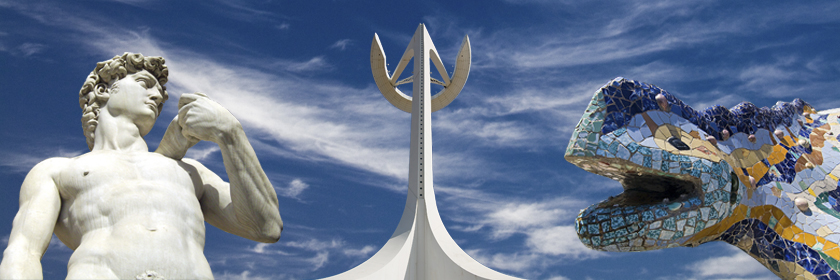

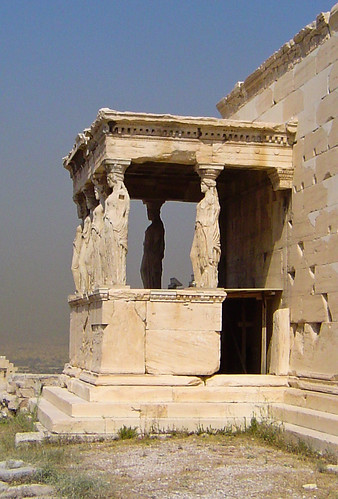

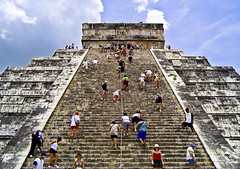



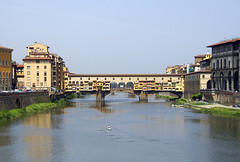




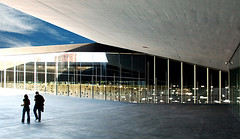


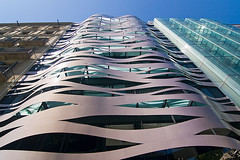





No hay comentarios:
Publicar un comentario